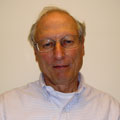Other Journals
Elisabete Martins
Sir Peter Hall, 1932 – 2014
Sir Peter Hall, 1932 – 2014
The Guardian, Thursday 31 July 2014 14.09 EDT
Planner with a vision of how people's lives would change – and cities with them Sir Peter Hall outside the Town and Country Planning Association offices in central London, 2007.
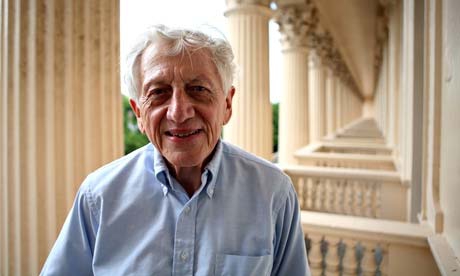
Photograph: Graham Turner for the Guardian
The main concern of the geographer and town planner Sir Peter Hall, who has died aged 82, was the growth and change of cities. Britain's leading expert in the field, he was professor of planning and regeneration at the Bartlett, University College London, and president of the Town and Country Planning Association, where we were fellow activists, and the Regional Studies Association. In addition to research, teaching and acting as his subject's great communicator, he
had a direct involvement in public policy.
The special adviser on strategic planning (1991–94) to the environment secretary Michael Heseltine, he helped shape the vision of the East Thames Corridor (later Thames Gateway) and Channel Tunnel rail link (now HS1). He was a somewhat dissident member of John Prescott's Urban Task Force (1998–99), being uncomfortable with his colleagues' enthusiasm for the dense developments referred to by some as "town cramming". Peter was a member of the expert advisory committee to the review of the planning system headed by the economist Kate Barker (2006) and the Eco-Towns Challenge Panel (2008).
In 2009, he co-authored a report on future train stations for the transport secretary, and launched Sintropher, a five-year, €22m (£17.4m), transnational EU programme bringing together five regions in north-west Europe to promote new transport technologies, particularly for tram, train and air intermodal transfer, to assist regional development. His vision of clusters of existing towns and new garden cities to form new dynamic city regions in the north-west, the Midlands and the south-east of England won his team a commendation in the Wolfson economics prize competition in May 2014.
Peter was born in Hampstead, north London, the son of Bertha (nee Keefe) and Arthur. In 1940 the family was relocated to Blackpool because of his father's work in the pensions service; Peter was later to become the chair of Blackpool's regeneration agency (2004-08).
From Blackpool grammar school he went to St Catharine's College, Cambridge, and gained a master's and doctorate in geography. His first appointment was as a lecturer at Birkbeck College, University of London (1957), and he went on to become a reader in geography at the London School of Economics (1966) and professor of geography at Reading University (1968-89).
Running parallel through the 1980s, he was also professor in the department of city and regional planning at the University of California, Berkeley, where he continued until taking up the chair of planning (1992) at the Bartlett, where he was active until his death.
In an interview with Ben Rogers for the Guardian, Peter estimated that he had written around 50 books and 2,100 articles and shorter pieces. He reckoned that he had travelled about 70,000 miles for each of the last 40 years, studying and advising upon cities and regions.
Peter's initial perspective, like many of his contemporaries', was Fabian and framed by the welfare state constructed by Clement Attlee's incoming Labour government of 1945. That postwar political settlement included town and country planning, with its cornerstone being the nationalisation of development rights. The first of Peter's books to attract widespread attention, London 2000 (1963) argued for major replanning of London and the south-east, but describes the likely life of an imaginary future family in a way that was prescient. He could see, as did the American theorist Mel Webber, with his later description of the "realm of the urban non-place",
that we would no longer lead lives that were shaped so much by the design of our immediate locality. An article in New Society (1969) entitled Non-Plan: An Experiment in Freedom (1969), written with Reyner Banham, Paul Barker and Cedric Price, is a classic. It is not what may be expected – an essay against planning – but an essay in support of planning that mattered.
As former industrial cities degenerated in the 1970s, Peter produced a series of papers arguing that "we would aim to recreate the Hong Kong of the 1950s and 1960s inside inner Liverpool or inner Glasgow". Thus came the UK's enterprise zones which, among many consequences, led to the creation of the (ironically tightly planned) Canary Wharf, which was a direct challenge to the pre-eminence in financial services of the City of London.
Peter found traditional political tribes increasingly irrelevant, and told everyone that the leaders he had enjoyed working with most were the Conservative Heseltine and Labour's Andrew Adonis, in whom he found a soulmate in planning strategic rail investment such as Crossrail (not only 1, being constructed west-east under London, but his hoped-for 2, running north-south) and HS2 (from London to the Midlands and beyond, and 3 and hoped-for more).
At Berkeley, Peter was entranced by the effects that information technology would have on the way we lived, and what the impact on the planet would be. But his perspective was panoptic. In his history Cities in Civilisation (1998), emerging technical and economic innovations are interwoven with religion, art, literature and philosophy.
Peter displayed a lifelong commitment to Ebenezer Howard and the garden-city movement that his ideas sustained. Howard's book Tomorrow: A Peaceful Path to Real Reform (1898, in later editions Garden Cities of Tomorrow) set out his vision for small healthy towns contained by productive agricultural belts which, joined together by excellent public transport, could cluster to support the attractions characteristic of great metropolitan regions. Peter argued that, while large cities have their place, smaller cities on the garden-city model have enormous potential. "I remain very firmly wedded," he said, "to a huge new programme of garden cities." All three
main political parties have now moved to that position.
Recently, Peter had published a major revision of Sociable Cities (first published in 1998), a book exploring the enduring significance of Howard that he had co-authored with the anarchist Colin Ward, who died in 2010. Peter's densely illustrated, roller-coaster ride lectures on growth and change in city regions, including the case for some new towns and garden cities as the antidote to sprawl, were hugely popular, constantly refreshed by his latest garnerings from his travels and research, and given generously and often.
He was knighted in 1998, received numerous prizes and doctorates, and was a fellow of the British Academy (1983). The Queen named him a "pioneer in the life of the nation" at a Buckingham Palace reception in 2003, and two years later Prescott gave him a lifetime achievement award at a sustainable communities summit.
Peter retained his hunger for information of any geographical type and in any form to fuel his expanding universe of comprehension of the way people and places interact, their mutual interdependence and especially their separateness, their competition and compatibility, and their possible destinies and the consequences that flow. Early in his career, he was referred to as a surfer of information, but it was a facility that he turned to advantage. The extent of the connectedness of things was an abiding interest to Peter, and his delight in discovery and in telling us about his discoveries showed an enthusiasm that was both persuasive and infectious.
He was charming and popular with his students and those he advised.
In 1962, Peter married Carla Wartenberg; they divorced in 1966. The following year he married Magdalena Mróz, and she survives him.
Peter Geoffrey Hall, geographer, town planner and social scientist, born 19 March 1932; died 30 July 2014
Words of Condolence on the late Dr. Yasuhiko Oishi and his brilliant historical footsteps
1. Words of Condolence on the late Yasuhiko Oishi, the Second President of the Japan Section of RSAI
At the time of January 16, dawn, 2014 (h. 26), The Second President of The Japan Section of the RSAI (1973-1982), Emeritus Professor, The University of Tokyo, Doctor of Economics, Yasuhiko Oishi suddenly passed away.
Our grief is far beyond description, who had gathered in the Japan Section, having the same will and aim. Here, as senior, I will state respectfully to the soul of Oishi in heaven.
Looked back in the Past, Professor initiatively had founded our Japan Section on June 19th, 1962, responding to the requests of the Regional Science Association. Since then, through fifty more years Professor had always occupied the very important position of our Society, concentrated his energies on the theoretical and laborious leadership in the style different from other applied economics and various policy sciences, and contributed to the development of our Japan Section, also holding concurrently the post of the Secretariat, pressed with various business, under the Presidency of Japan Section.
Consequently it has resulted that the flourishing Japan Section may now be shown in the number of members has reached one thousand, and it begins to occupy the position as a prominent figure obviously in the world of the RSAI due to our indefatigable assiduity; which, a good many, really are gifts of his exertion.
Professor was a genuine regional economist, a person of economic policy, various models of whom were the idea being magnificent, the assembly of which was also brief and to the point.
Especially, the short review of “Insufficiency of consideration to the national economic viewpoints (external economies, social benefits)” <which was basis to> in relation to the two big projects of Watkins’ Mei-Shin Expressway Research and Research Materials for Loan submitted to the World Bank, at the time of the founding of The Japan Regional Science Association, in G. Konno, Y. Oishi, et al. (ed.) Investigation on the Watkins’ Expressway Research Report (Japan Highway Public Corporation, 1957); which has, up to now, played the leading part in our field uninterruptedly. Here, the other contributions are omitted.
When he was in the world, he always furnished the innate balancing sense between his theory and actuality, yet he hitched his wagon to a star; did not cater to the depraved public taste, and moreover he had uncommon intelligence, and was the person of docility and benevolence, so he had fascinating individuality to be rendered profound respect by many juniors who had the pleasure of meeting him.
Ah! Professor meets his end; but his words during his lifetime still ring in our ears; his kindly face while in life shines before our eyes, however, Alas! He is dead and gone! And so early live in the other world.
Consequently, we cannot receive his guidance forever from this time forward.
Alas! Professor is no more. At the thought of these and looking back upon those, from feeling of condolence, our heart is too full for words; here we again intend to confer him the highest meritorious reward of The Japan Section. Ask the soul of Professor, please accept a small token of our gratitude.
And we also swear to prosecute our studies which will be right in the sight of God and you.
Reverently, we made our humble remarks. May his soul in heaven rest in peace and receive these!
January 24th, 2014
The 3rd President of The Japan Section of the RSAI
Emeritus Professor, The University of Tsukuba
Hirotada KOHNO
The 10th Vice-President of The Japan Section of the RSAI
Emeritus Professor, The Senshu University
Katsuyuki KURASHIMO
Job Position | Tenure-Track Positions in Urban and Regional Planning
Faculty of Architecture and Town Planning
Technion – Israel Institute of Technology
Tenure-Track Positions in Urban and Regional Planning
July 2014
The Graduate Program in Urban and Regional Planning at the Technion – Israel Institute of Technology (IIT) is seeking to expand its program with a tenure-track
faculty position. The position is open-rank – both junior and senior academics may apply. The appointment can start in October 1, 2015 or later. Salary and compensation are compatible with Israeli university standards.
Qualifications
The successful candidate will have demonstrated exemplary scholarship and teaching in his/her field (as compatible with his or her academic rank). Applicants must hold a Ph.D. degree in economics, urban planning or in a related field with an academic background and focus on economics.
We are especially interested in candidates specializing in:
- Urban and regional economics
- Housing and real estate economics
- Spatial statistics, spatio-temporal and data-driven analyses of decision making in spatial planning
Successful candidates will be expected to teach graduate-level economics courses for planners, supervise Master’s theses and Ph.D. dissertations, conduct cutting-edge
research, and participate in Faculty (school) and university-wide activities. The rank will be determined in accordance with the candidate's record and accomplishments.
Prior knowledge of Hebrew is not necessary and teaching may be conducted in English.
About the Technion and the Graduate Program in Urban and Regional Planning
The Technion is the leading university of science and technology in Israel and is regarded among the top institutions of its kind worldwide. In the past decade, three of its faculty members won two Nobel prizes. The Graduate Program in Urban and Regional Planning (within the Faculty of Architecture and Town Planning) was founded in 1969. It is the only planning program in Israel offering a Master’s and PhD planning degrees accredited by the Council for Higher Education. The Program was the first program to join the American Association of Collegiate Schools of Planning (ACSP) as a corresponding member, and the first non-European program to join the Association of European Schools of Planning (AESOP). Currently there are 140 M.Sc students and 30 Ph.D. students at the program.
The Technion is located in Haifa in the green Mount Carmel area in the northern part of Israel with breathtaking views. The city offers excellent housing, education and
other public services and high quality of life. The City is the locus home of much of Israel’s renowned high tech industry.
For more information about our graduate studies, please see the faculty web site at:
http://architecture.technion.ac.il/en/
Applicants should submit the following materials in both electronic and hard copy:
1. Letter of interest describing the research areas, teaching experience and future interests.
2. Curriculum vitae including list of publications.
3. Names and contacts of three potential referees.
The review process will start on November 1, 2014 and will continue until the position is filled.
Applications should submit to Dr. Pnina Plaut Program Chair
This email address is being protected from spambots. You need JavaScript enabled to view it.
Graduate Program in Urban and Regional Planning
Faculty of Architecture and Town Planning
Technion – Israel Institute of Technology
Haifa, 32000 Israel
The Jean Paelinck RSAI Award
2025 The Jean Paelinck RSAI Award for Distinguished Sustained Scholarship in Regional Science Methods
DEADLINE to RECEIVE NOMINATIONS: May 31st 2025
Winners
2025 |
||||
|
The Jean Paelinck committee, made up of Roberta Capello (chair), Budy Resosudarmo (PRSCO), Eduardo Haddad (LARSA), Juan Ramon Cuadrado Roura (ERSA), and Kara Kockelman (NARSC), provided the following motivation: Luc Anselin is awarded the 2025 Jean Paelinck Award. The commission recognises Luc's outstanding contribution to regional science, especially in the field of spatial econometrics methods and techniques. Luc has marked a truly innovative pathway in his research activities, pioneering the formal integration of spatial dependence into econometric models at a time when such approaches were still marginal. His seminal work laid the foundations for what is now a thriving field of spatial econometrics, setting methodological standards that have since been adopted across a wide range of disciplines, from regional science and economics to political science, epidemiology, and environmental studies. Luc’s scholarship has been instrumental in transforming how we conceptualize and measure spatial processes, particularly through his development of local indicators of spatial association (LISA) and his rigorous treatment of spatial lag and error models. Luc’s influence extends well beyond academic publications. He has empowered generations of scholars and practitioners through the creation of accessible, open-source software platforms like SpaceStat, GeoDa, and PySAL. These tools have democratized spatial analysis and enabled users worldwide to apply cutting-edge techniques in spatial econometrics with transparency and rigor. His intellectual leadership has been matched by a deep commitment to community-building, serving as director of key research centers, mentoring young scholars, and fostering interdisciplinary collaboration. Luc Anselin embodies the spirit of Jean Paelinck through his relentless pursuit of methodological clarity, his devotion to spatial analytical thinking, and his enduring impact on the scientific infrastructure of regional science. |
||||
2023 |
|
|||
|
The Jean Paelinck committee, made up of Geoffrey Hewings (Chair), Isabelle Thomas, Janet Kohlase, Juan Cuadrado-Roura, and Kieran Donaghy, provided the following motivation: Paul Elhorst is Professor of Spatial Econometrics at the University of Groningen, the Netherlands, Fellow of the Spatial Econometrics Association and Editor-in-Chief of the journal Spatial Economic Analysis. During his 40 years academic career he has maintained an active research and publication schedule, a career that demonstrates his commitment to research and scholarship in regional science methods. In the 1990s his research activities focused on regional labor market analysis and then shifted increasingly to spatial econometric methods (theory and applications), with applications in a diversity of research areas such as economic growth, research productivity, regional tax competition, military spending, foreign direct investment and transport economics. |
||||
2021 |
2015 |
|||
|
The selection committee, made up of Prof. Budy Resosudarmo (ASU; Chair). Prof. Michael Batty (UCL), Prof. Janet Kohlase (University of Texas at Houston), Prof. Isabelle Thomas (Universitè Catholique de Louvain), and Prof. Jouke Van Dijk (University of Groningen), provided the following motivation for the prize: “After examining the works as well as considering recommendations by nine distinguished RSAI fellows, the committee is delighted to award the 2021 Jean Paelinck RSAI Award to Professor Daniel (Dan) A. Griffith. The committee is convinced that since early 1970s till these days Professor Griffith consistently contributed and shaped the field of regional science and, in general, advanced spatial statistics by publishing more than 180 journal articles, approximately 70 of them are as single author, in key regional science/spatial statistics journals and 11 important books. His contributions have been recognized with awards from many academic societies and professional organizations, including being an elected Fellow of the American Statistical Association”. |
Professor Manfred M. Fischer, from Vienna University of Economics and Business, received the RSAI Jean Paelinck Award 2015. The Jean Paelinck Award recognizes and honors the truly outstanding scholarly achievement of a senior and internationally recognized regional scientist in the field of Regional Science Methods and it is awarded with the nomination of five RSAI Fellows, with the selection of the Jury and with the approval by the RSAI Council. Manfred M. Fischer fulfills all the required criteria in an excellent way:
|
|||
2019 |
||||
|
The Jean Paelinck Award recognizes and honors the truly outstanding scholarly achievement of a senior and internationally recognized regional scientist in the field of Regional Science Methods and it is awarded with the nomination of five RSAI Fellows, with the selection of the Jury and with the approval by the RSAI Council. |
||||
2017 |
||||
|
Professor Arthur Getis, a Professor Emeritus of Geography at San Diego State University, received the RSAI Jean Paelinck Award 2017. The Jean Paelinck Award recognizes and honors the truly outstanding scholarly achievement of a senior and internationally recognized regional scientist in the field of Regional Science Methods and it is awarded with the nomination of five RSAI Fellows, with the selection of the Jury and with the approval by the RSAI Council. |
||||
Award honoring Jean Paelinck, one of the four founding Fellows of RSAI
2025 The Jean Paelinck RSAI Award for Distinguished Sustained Scholarship in Regional Science Methods
DEADLINE to RECEIVE NOMINATIONS: May 31st 2025
1. Goal
1.1 The “Jean Paelinck Award for Distinguished Sustained Scholarship in Regional Science Methods” recognizes and honors the truly outstanding scholarly achievement of a senior and internationally recognized regional scientist in the field of Regional Science Methods. Such an achievement should be recognized from an early stage in a recipient’s academic career and be sustained throughout the duration of their career.
1.2 The Award celebrates that career and recognizes the attainment of outstanding scholarly excellence in contributing to innovation in the development of Regional Science Methods.
2. The Award
2.1 The Jean Paelinck Award for Distinguished Scholarship in Regional Science Methods is established to recognize and honor the distinguished scholarly career of Jean Paelinck, one of the four foundation Fellows of RSAI.
2.2 The Award will be given periodically (every odd year) by the RSAI Council, and is recognized as one of the highest honors bestowed by RSAI.
3. Eligibility
3.1 The Jean Paelinck Award for Distinguished Sustained Scholarship in Regional Science Methods may only be awarded to a regional scientist who has already been recognized for his/her scholarly excellence.
3.2 Normally the recipient of this Award would be nearing retirement or be formally retired (over 60), but still be active as a contributor to scholarship in Regional Science.
4. Nomination and Process for Making the Award
4.1 Nominations or consideration for the Jean Paelinck Award for Distinguished Sustained Scholarship in Regional Science Methods will be solicited every two (2) years.
4.3 A nomination for consideration for the Jean Paelinck Award for Distinguished Sustained Scholarship in Regional Science Methods comes from RSAI Fellows. The criteria to be addressed in nominating a candidate should include -among others-, the following: demonstration of early career scholarly contribution, sustained continuing scholarly contribution, international impact, inter-generational impacts (students and colleagues), impact on other related areas to regional science.
4.4 A nomination must be accompanied by testimonials from a minimum of five (5) eminent scholars from at least three (3) nations who are able to verify the importance and scholarly standing and importance of the nominee’s publications. Nominations may remain active for five (5) years.
4.6 The nomination and supporting documents are to be sent to the Executive Director of RSAI who will then forward them to the members of a Selection Jury. Deadline to receive the nomination and supporting documents will be May 31st of the year of the Award.
4.7 The Selection Jury comprises a Chair (selected by the RSAI Council, and who is a member of the RSAI Long Range Planning Committee), plus four (4) RSAI Fellows. A Chair’s tenure is limited to two (2) selection processes. Two (2) RSAI Fellow members of the Selection Jury rotate off every two (2) years.
4.8 When the Selection Jury recommends someone for the Award, the Executive Director will inform the RSAI Council in writing of the nominee. Unless within fourteen (14) days more than one-third of the members of the RSAI Council advise the Executive Director in writing of their dissent regarding the nomination, then the RSAI President or Executive Director will write to the nominee and invite him/her to accept the Award.
4.9 The presentation of the Jean Paelinck Award for Distinguished Sustained Scholarship in Regional Science Methods will take place at one of the RSAI supra-regional meetings (NARSC/RSAmericas, ERSA, PRSCO), or at the RSAI World Congress.
5. The Award
5.1 The Jean Paelinck Award for Distinguished Lifelong Scholarship in Regional Science Methods will consist of a framed certificate containing the words “The Jean Paelinck Award for Distinguished Sustained Scholarship in Regional Science Methods.”
5.2 The certificate will include the RSAI logo and the name of the Award, and a citation outlining the recipient’s scholarly achievement and the reasons why the Award is being made.
NECTAR 2015 International Conference - call for papers
Dear NECTAR friends,
Please find enclosed the call for paper for the next NECTAR 2015 International Conference in Ann Arbor, Michigan, United States of America.
You can also find more information about this event in www.taubmancollege.umich.edu/nectar
All specific inquiries about this conference should be forward to the local organizer Jonathan Levine: This email address is being protected from spambots. You need JavaScript enabled to view it.
Kind regards
Ana Condeço-Melhorado
NECTAR secretary
CALL FOR PAPERS: Geocomputation 2015
CALL FOR PAPERS: Geocomputation 2015
On behalf of the organizing committee, I am delighted to invite you to participate in the GeoComputation 2015 conference. The conference will be held at the University of Texas at Dallas from May 20-23, 2015. The conference encourages diverse topics related to novel methodologies and technologies to enrich the future development GeoComputation.
Abstract submission for oral and poster presentations is scheduled to open on October 1, 2014.
For detailed information, please visit the conference website (http://www.utdallas.edu/geocomputation). Any questions can be directed to This email address is being protected from spambots. You need JavaScript enabled to view it..
Best regards,
Yongwan Chun
The University of Texas at Dallas
14th Ernestas Galvanauskas’ International Scientific Conference „RETHINKING REGIONAL COMPETITIVENESS“
Dear Colleagues,
We cordially invite researchers, scientists and experts to participate in the 14th Ernestas Galvanauskas’ International Scientific Conference„RETHINKING REGIONAL COMPETITIVENESS“, which will be held on 27th – 28th November, 2014 in Siauliai, Lithuania.
Please find the attached invitation.
More information: http://www.su.lt/smf/galvanauskas-en
Registration deadline – October 1, 2014.
We kindly ask you to forward this information to other colleaguesthat may be interested in the conference.
We apologize if you receive multiple copies of this mail.
We look forward to seeing you at the conference!
Best regards,
Conference Organizers
CITTA 7th ANNUAL CONFERENCE ON PLANNING RESEARCH, 24th of October 2014
‘Bridging the Implementation Gap of Accessibility Instruments and Planning Support Systems’– is the topic of the next conference organized by http://citta-conference.fe.up.pt/link_icon.gif); background-position: 0px 1px; background-repeat: no-repeat;">CITTA - Research Center for Territory, Transport and Environment, held at the Faculty of Engineering, Porto University on the 24th of October 2014.
This year's edition will be joined with the Final Conference of the COST Action TU1002 on ‘Accessibility Instruments for Planning Practice in Europe’, sharing the second day of this event (for more information click http://citta-conference.fe.up.pt/link_icon.gif); background-position: 0px 1px; background-repeat: no-repeat;">here).
Theme of the conference
Although the development of instruments for planning support dates back much further, the concept of Planning Support Systems (PSS) appeared in the planning literature in the mid-1980s. In the last decades, planning research and literature has witnessed a significant proliferation of PSS. Regardless of this, very few of the developed PSS are actually used in practice. Literature suggests that a fundamental dichotomy between supply and demand of information and models to support planning practice could be the main reason for this phenomenon. On the one hand, planning practitioners – the potential users of these instruments – are generally unaware of and inexperienced in the use of them. On the other hand, the authors of these instruments have, in general, little awareness of the related demand requirements in the complex planning context in which these instruments have to be applied.
This conference aims to bring together a wide range of Planning Support Systems (PSS) in an embracing debate on their implementation gap in planning practice. In addition to collecting a number of PSS, the conference aims to discuss the usefulness of PSS in planning practice from a dual perspective – author/practitioner – looking for recommendations to support the design of more useful PSS in the future.
Being joined with the Final Conference of the COST Action on Accessibility Instruments in Planning Practice, the CITTA conference will gain from the presentation of the outcomes and findings of European and Australian wide research on usability of accessibility instruments, opening, at the same time, the debate to other (non-accessibility-based) PSS, such as those dealing with environmental, land use and transport planning issues.
Keynote speakers
on the 24th of October (2nd day of the joint event; day of the 7th CITTA conference)
Marco te Brömmelstroet - University of Amsterdam, the Netherlands
Marco te Brömmelstroet holds the position of Assistant Professor in urban planning at the University of Amsterdam. His teaching and research focuses on the relation between land use and mobility. Recent research focussed on the usability of planning support systems for integrated urban strategy making processes. The role of transport models, accessibility instruments and cost benefit analyses in decision-making are central in his research interests.
Paulo Pinho - University of Porto, Portugal
Paulo Pinho is Full Professor of Spatial Planning at the Faculty of Engineering, University of Porto, founder and Director of CITTA, the Research Centre for Territory, Transports and Environment, and Director of the PhD Programme in Spatial Planning, a joint initiative of the Universities of Porto and Coimbra. His recent research focuses on urban metabolism and low carbon cities, urban morphology and metropolitan dynamics, shrinking cities and new forms of urban space production.
Cecília Silva - University of Porto, Portugal
Cecília Silva is Assistant Professor at the University of Oporto. Her main research activities are focussed on Mobility Management, Accessibility Planning and Planning Support Instruments. She has developed a decision support tool for mobility management based on the concept of structural accessibility. She is the chair of a COST Action on Accessibility Instruments in Planning Practice. Her research activities have led to books, book chapters and a number of papers in international journals and conferences.
Stan Geertman - University of Utrecht, The Netherlands to be confirmed
Additional Keynote Speakers
on the 23rd of October (1st day of the joint event)
Susan Handy - University of California, Davis, USA
Susan Handy is Chair of the Department of Environmental Science and Policy and the Director of the National Center for Sustainable Transportation at the University of California, Davis. Her research interests center on the relationships between transportation and land use, particularly the impact of neighborhood design on travel behavior. She is a member of the Committee on Women’s Issues in Transportation of the Transportation Research Board and is an associate editor of the newly launched Journal of Transport and Health.
Karst Geurs - University of Twente, the Netherlands
Karst Geurs is Full Professor of Transport Planning at the Centre for Transport Studies, Faculty of Engineering Technology, University of Twente, The Netherlands. His research focuses on accessibility analysis and modelling, land-use and transport interactions, transport policy evaluation and sustainable transport. He has over 20 journal publications and many other publications. He is the current president of NECTAR (Network of European Communications and Transport Activities Research).
Angela Hull - Heriot Watt University, United Kingdom
Angela Hull holds the Chair in Spatial Planning at Heriot Watt University, Edinburgh UK. In her early career she worked as a local government town planner followed by a period in consultancy. She has worked in academia for the last 25 years teaching town planning and urban management. Her research spans across governance and organisational behaviour in sustainable urban management particularly examining the institutional triggers to changed approaches in transport, energy, and housing.
Carey Curtis - Curtin University, Australia to be confirmed
Organizing Committee
Cecília Silva (Chair), Paulo Pinho, Anabela Ribeiro, Paulo Conceição, Ana Amante, Miguel Lopes, Tiago Patatas, Ana Sousa
Scientific Committee
Álvaro Seco, António Pais Antunes, Cecília Silva, Isabel Vazquez, Luca Bertolini, Marco te Brömmelstroet, Nuno Pinto, Paulo Pinho
More info at: http://citta-conference.fe.up.pt/
Transience and Permanence in Urban Development Workshop: Call for abstracts
Workshop: 'Transience and Permanence in Urban Development'
University of Sheffield, January 2015
Organisers: Prof. John Henneberry and Dr. Simon Parris
Please see attached call for abstracts for a small, research intensive workshop examining transience and permanence in urban development.
Proposals are invited for original papers to be presented at the workshop and subsequently to be considered for inclusion in a significant joint publication.
Post-industrial cities have experienced a dramatic growth in vacant/derelict land and buildings, raising questions about how such sites may be used temporarily for social, economic or environmental benefit, and about how these transient uses may affect the long-run trajectory of urban development. A burgeoning literature on temporary uses has evolved. However, this field is in need of consolidation and development. The aim of the workshop is to provide an opportunity for critical reflection on transience and permanence in urban development.
The deadline for applications is 14 July 2014. Decisions on the workshop invitations will be made by 28 July. Full papers will be required by 31 December 2014.
Reasonable expenses of lead authors will be met. Other authors are free to attend at their own expense.
Please see attached call for full details.
JOB ANNOUNCEMENT: VASG-NCBO Postgraduate Fellowship in Ecosystem-Based Fisheries Management & Implementation
Virginia Sea Grant – NOAA Chesapeake Bay Office Postgraduate Fellowship:
Ecosystem-Based Fisheries Management & Implementation
Deadline: July 19, 2014.
Overview
In partnership with the NOAA Chesapeake Bay Office, Virginia Sea Grant announces the availability of a two-year, postgraduate fellowship in ecosystem-based fisheries management (EBFM). This fellowship seeks to advance EBFM in the Chesapeake Bay by improving the understanding of linkages between fisheries, land-use changes, habitats, and the ecosystem services they provide. The fellow will leverage past EBFM work in the region, conduct literature review and extensive expert consultation, synthesize and integrate available scientific information, and develop decision support materials and conduct outreach to Chesapeake Bay coastal resource managers. While the specific EBFM project to be conducted will be determined in part by the expertise of the selected fellow, we envision a fellow working on a narrowly defined, concise project within one or more of the following thematic areas: climate change impacts on fisheries resources; ecosystem indicators for fishery management; habitat and fisheries linkages; or valuation.
Eligibility and Qualifications
Applicants must be a U.S. citizen, lawful permanent resident, or hold an appropriate visa to work within the U.S. Minimum skills and qualifications include: (1) Recent Ph.D. (within last five years) from a relevant social, natural, or interdisciplinary science program with emphasis in areas such as marine policy, natural resource management, ecosystem service valuation, or socio-environmental systems research; (2) Interdisciplinary background that includes some combination of environmental and natural resource policy, ecology, and fisheries expertise, with experience in coupled human-natural systems; (3) Strong research and analytical skills; (4) Strong interpersonal, written, and verbal communication skills, including excellent command of English; and (5) Creative, motivated, and capable of working well both independently and cooperatively within an interdisciplinary group. Preferred skills and qualifications include: (1) Demonstrated interest and experience working at the interface of science and resource management; (2) Demonstrated ability to translate scientific and technical concepts across disciplines and audiences; (3) Familiarity with large ecosystem protection and restoration programs; and (4) Strong quantitative skills for human-natural systems data meta-analysis, synthesis research, or policy studies.
Location, Salary, and Benefits
The fellow will be based at the Virginia Institute of Marine Science (VIMS) and will be paid $42,000/year for two years, with full employee benefits through VIMS and the College of William & Mary. In addition, there are funds available for travel and supplies.
To Apply
Qualified applicants may apply via the College of William & Mary jobs website: http://jobs.wm.edu/postings/17883. Applicants will be asked to submit (via the website): (1) a cover letter, including a statement reflecting their interests and expertise in EBFM and its implementation; (2) a CV that lists all GPAs and relevant graduate coursework; (3) a short writing sample (preferably less than 5-pg) targeting an end-user audience (e.g., manager, policy maker, citizen, stakeholder) and (4) three letters of recommendation submitted by referees. Review of applications will begin July 19, 2014.
Additional Information
Please see attached job announcement for additional information. Candidates may contact Susan Park (This email address is being protected from spambots. You need JavaScript enabled to view it., 804-684-7436) with any questions.
About Us
The Regional Science Association International (RSAI), founded in 1954, is an international community of scholars interested in the regional impacts of national or global processes of economic and social change.

 Prof. Luc Anselin
Prof. Luc Anselin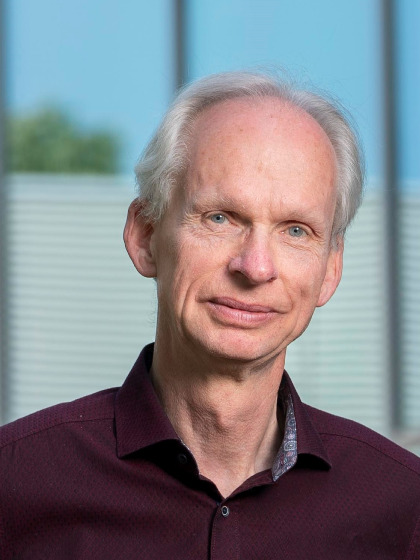 Prof. Paul Elhorst
Prof. Paul Elhorst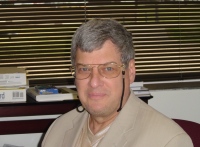 Professor Daniel (Dan) A. Griffith
Professor Daniel (Dan) A. Griffith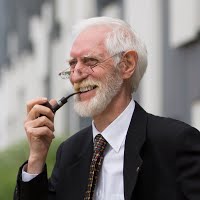
 Professor James LeSage
Professor James LeSage